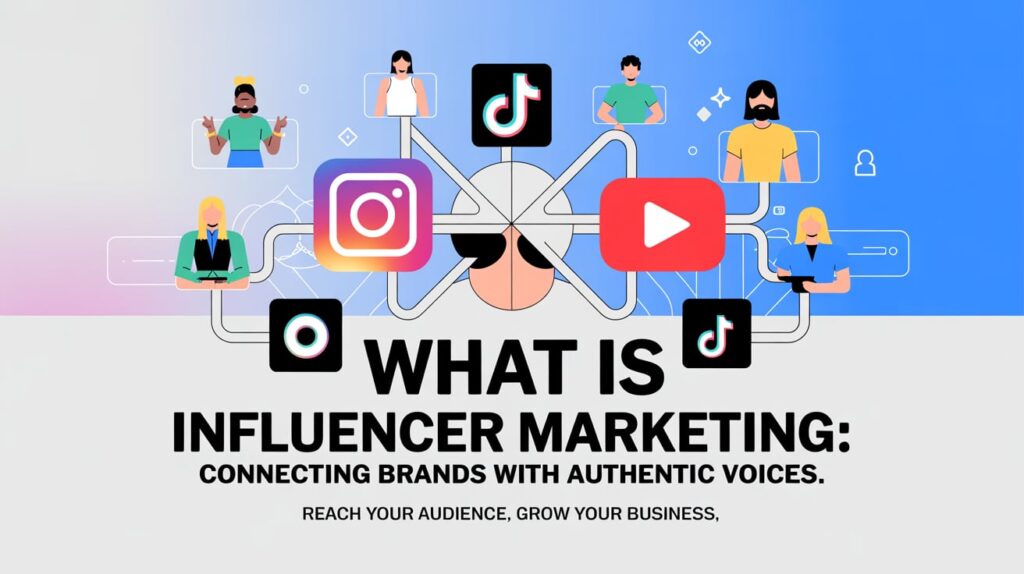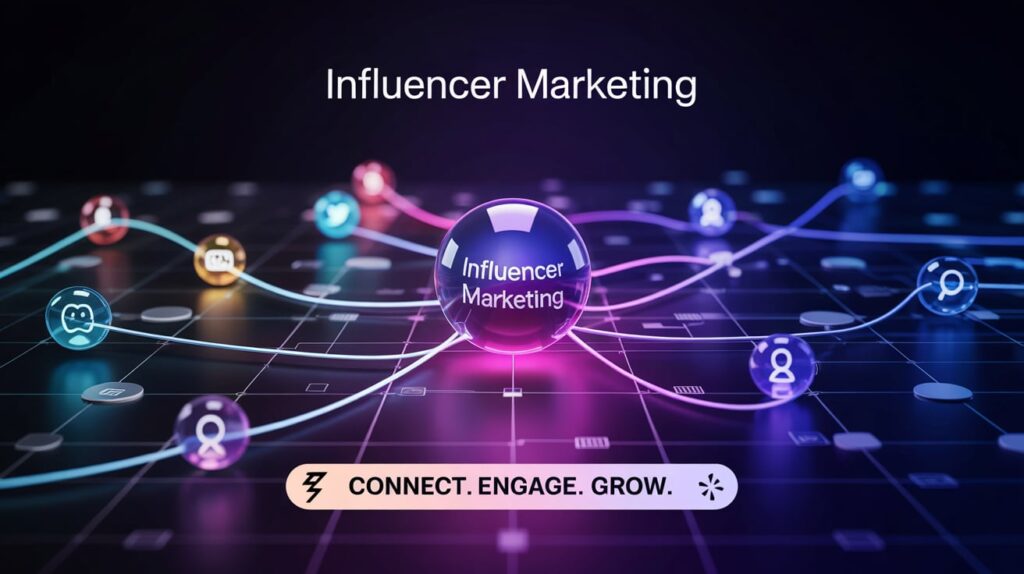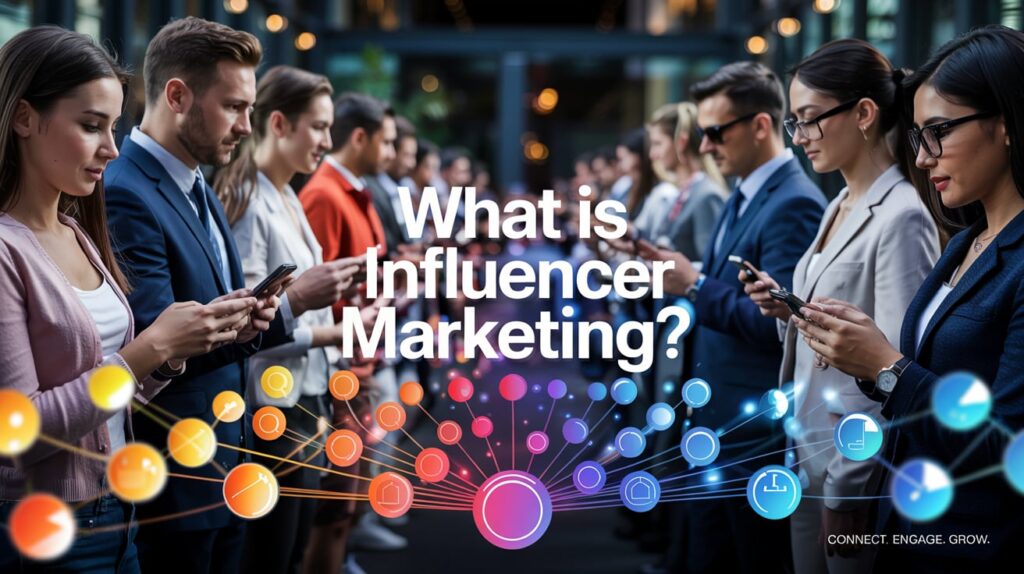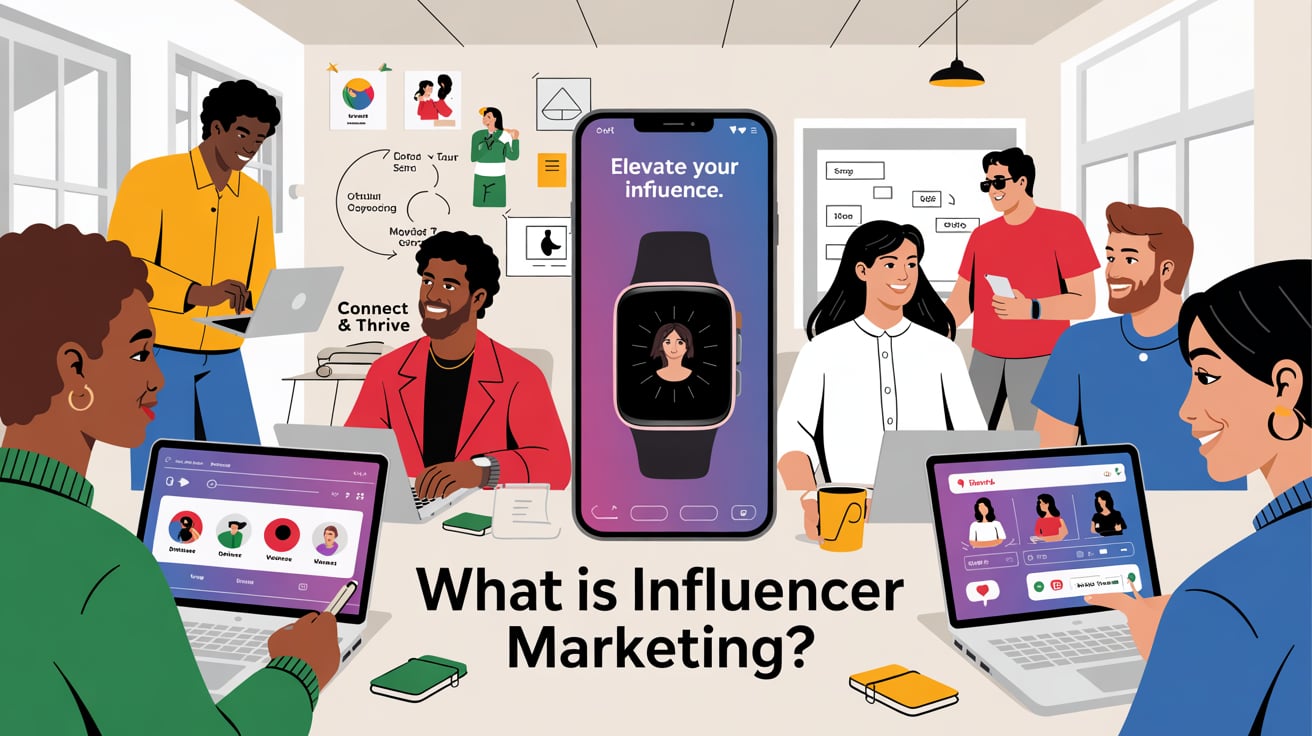Introduction: The Rise of Influencer Marketing
In today’s digital-first world, traditional advertising methods are losing their grip on consumers. People increasingly distrust blatant ads and turn instead to recommendations from people they follow and admire online. This shift has given birth to one of the most powerful marketing strategies of our time: influencer marketing.
But what exactly is influencer marketing, and why has it become so effective? In this comprehensive guide, we’ll explore:
✅ Definition and evolution of influencer marketing
✅ Different types of influencers
✅ Why influencer marketing works so well
✅ How to launch a successful influencer campaign
✅ Real-world examples and case studies
✅ Future trends in influencer marketing
By the end of this article, you’ll understand exactly how to leverage influencer marketing for your brand or business.
What Is Influencer Marketing? (Definition)
Influencer marketing is a form of social media marketing where brands collaborate with influential people (influencers) to promote their products or services to the influencer’s audience.
Unlike traditional celebrity endorsements, influencer marketing thrives on authenticity, relatability, and niche expertise. Influencers aren’t just famous faces—they’re trusted voices within specific communities, whether that’s fitness, beauty, gaming, parenting, or any other interest area.

Key Characteristics of Influencer Marketing:
- Relationship-driven: Built on trust between influencer and audience
- Content-focused: Relies on organic-looking posts rather than hard sells
- Platform-native: Content fits naturally on Instagram, TikTok, YouTube etc.
- Performance-based: Often measured through engagement and conversions
The Evolution of Influencer Marketing
Influencer marketing isn’t new—it’s simply the digital evolution of word-of-mouth marketing:
- Pre-Internet Era (1980s-90s): Celebrity endorsements in TV/print ads
- Early Social Media (2000s): Bloggers and early YouTubers gaining followings
- Instagram Boom (2010s): Rise of micro-influencers and sponsored posts
- TikTok Era (2020s): Authenticity and short-form video dominate
Today, the global influencer marketing industry is worth $21.1 billion (Influencer Marketing Hub, 2024), with no signs of slowing down.

Types of Influencers
Not all influencers are created equal. They’re typically categorized by:
1. By Follower Count
| Tier | Followers | Best For |
|---|---|---|
| Nano | 1K-10K | Hyper-local campaigns |
| Micro | 10K-100K | High engagement niches |
| Macro | 100K-1M | Broad awareness |
| Mega | 1M+ | Mass reach campaigns |
2. By Content Niche
- Beauty & Fashion
- Fitness & Wellness
- Gaming
- Parenting
- Business/Finance
- Travel
- Food
3. By Platform Specialization
- Instagram: Lifestyle, beauty, fashion
- TikTok: Trends, challenges, viral content
- YouTube: Long-form reviews, tutorials
- Twitter/X: Thought leadership
- LinkedIn: B2B and professional content
Why Influencer Marketing Works (Psychology Behind It)
Influencer marketing taps into powerful psychological principles:
- Social Proof (Bandwagon Effect): “If someone I admire uses this, it must be good”
- Parasocial Relationships: Followers feel genuine connections to influencers
- Authenticity Over Ads: 92% of consumers trust influencer recs over ads (Nielsen)
- Niche Authority: Micro-influencers seen as experts in their fields

How to Launch an Influencer Marketing Campaign
Step 1: Set Clear Goals
- Brand awareness?
- Website traffic?
- Sales/conversions?
- App downloads?
Step 2: Identify the Right Influencers
- Use tools like Upfluence, AspireIQ, or manual searches
- Look for:
- Audience match (demographics/interests)
- Engagement rate (>3% is good)
- Content quality and brand alignment
Step 3: Choose Collaboration Types
- Sponsored posts (paid promotions)
- Affiliate marketing (commission-based)
- Product seeding (free products for organic mentions)
- Takeovers (influencer runs your account)
- Long-term ambassadorships
Step 4: Create a Contract
- Clearly outline:
- Deliverables (number/type of posts)
- Usage rights
- Payment terms
- FTC disclosure requirements
Step 5: Track and Measure
Key metrics to monitor:
- Engagement rate
- Reach/impressions
- Click-through rate
- Conversion rate
- ROI (Revenue ÷ Spend)
Successful Influencer Marketing Examples
1. Gymshark x Fitness Influencers
Strategy: Partnered with micro-influencers to build a cult following
Result: Grew from startup to $1B+ valuation
2. Sephora #SephoraSquad
Strategy: Created a diverse beauty influencer community
Result: 12M+ UGC posts generated
3. Duolingo’s TikTok Viral Strategy
Strategy: Empowered social media team to act as brand influencers
Result: Gained 4M+ followers in 1 year

Future Trends in Influencer Marketing
- AI-Generated Influencers: Virtual influencers like Lil Miquela gaining traction
- Performance-Based Pay: More brands paying for results (sales) vs. just posts
- Long-Term Partnerships: Moving away from one-off campaigns
- Social Commerce: Shoppable influencer content becoming standard
- Audio Platforms: Podcast and Clubhouse influencers emerging
ALSO READ:- वेबसाइट की स्पीड कैसे बढ़ाएं – आसान तरीके
Conclusion: Is Influencer Marketing Right for You?
Influencer marketing isn’t a passing fad—it’s become a fundamental part of the modern marketing mix. When done right, it delivers:
✅ Higher engagement than traditional ads
✅ Better targeting through niche influencers
✅ Increased trust through authentic voices
✅ Stronger ROI when properly tracked
The key is to start small, measure everything, and focus on building genuine relationships with influencers who truly align with your brand.
Ready to Try Influencer Marketing?
Begin by:
- Researching 5-10 relevant influencers in your niche
- Engaging with their content authentically
- Reaching out with a personalized collaboration pitch
Have you run an influencer campaign before? Share your experiences in the comments!

